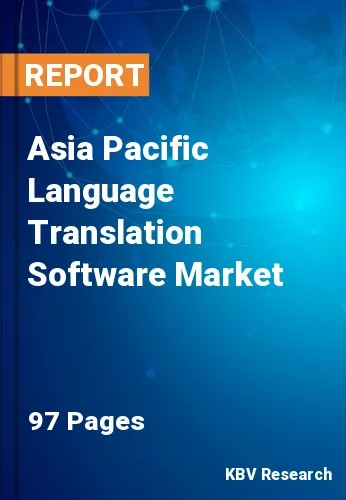The Asia Pacific Language Translation Software Market would witness market growth of 17.6% CAGR during the forecast period (2022-2028).
Online information searches are becoming more and more common, which could increase the need for language translation tools and services. Similar to how the smartphone industry has benefited from technological advancements, the language translation software market is anticipated to expand significantly over the next several years. Businesses emphasize effective regional market penetration and international networks to retain the fast-paced market landscape.
Businesses looking to boost productivity are anticipated to drive increasing demand for language translation software globally. Additionally, developing nations like India and China are anticipated to see significant growth in their business sectors, creating enormous potential prospects. It is anticipated that this circumstance will advance the market for language translation software.
The expanding use of mobile translation as well as the globalization of trade are two of the key market factors. In addition, cloud computing is rapidly expanding due to its flexibility and economic benefits. Moreover the increasing adoption of multilingual AI is also promoting the acceptance of language translation software. The application of AI gives data on clients' demographics, social and purchasing history. Utilizing these facts and insights, content and websites are localized, and adverts are made to reflect the audience's demographics.
Asia Pacific is a large region considering the number of spoken languages. Therefore, translation services are especially needed when marketing initiatives are being translated and culturally adapted. There are a lot of cultural aspects to take into account. Multicultural marketing encompasses many strategies, including transcreation, which is converting content from one language or culture to another while preserving the original aim, style, tone, and context. To ensure that diverse types of media, such as a website, look and convey in words and visuals what a firm intended them to and factors including website localization and multimedia, have increased the demand for translation tools. Hence, the widespread demand for language translation are boosting the expansion of the market in the region.
The China market dominated the Asia Pacific Language Translation Software Market by Country 2021, and would continue to be a dominant market till 2028; thereby, achieving a market value of $2,041.1 million by 2028. The Japan market is estimated to grow a CAGR of 16.9% during (2022 - 2028). Additionally, The India market would experience a CAGR of 18.3% during (2022 - 2028).
Based on Component, the market is segmented into Solution and Services. Based on Solution Type, the market is segmented into Rule-based Machine Translation, Statistical Machine Translation and Hybrid Machine Translation. Based on Vertical, the market is segmented into IT & Telecom, Manufacturing, Education, Healthcare, BFSI, Travel & Tourism and Others. Based on Enterprise Size, the market is segmented into Large Enterprises and SMEs. Based on countries, the market is segmented into China, Japan, India, South Korea, Singapore, Malaysia, and Rest of Asia Pacific.
Free Valuable Insights: The Worldwide Language Translation Software Market is Projected to reach USD 26 Billion by 2028, at a CAGR of 17%
The market research report covers the analysis of key stake holders of the market. Key companies profiled in the report include IBM Corporation, Google LLC (Alphabet Inc.), Acolad Group, AppTek, LanguageLine Solutions (Teleperformance SE), inRiver AB, Babylon Software Ltd., Lingotek, Inc., and SYSTRAN S.A.
By Component
By Vertical
By Enterprise Size
By Country
Our team of dedicated experts can provide you with attractive expansion opportunities for your business.

